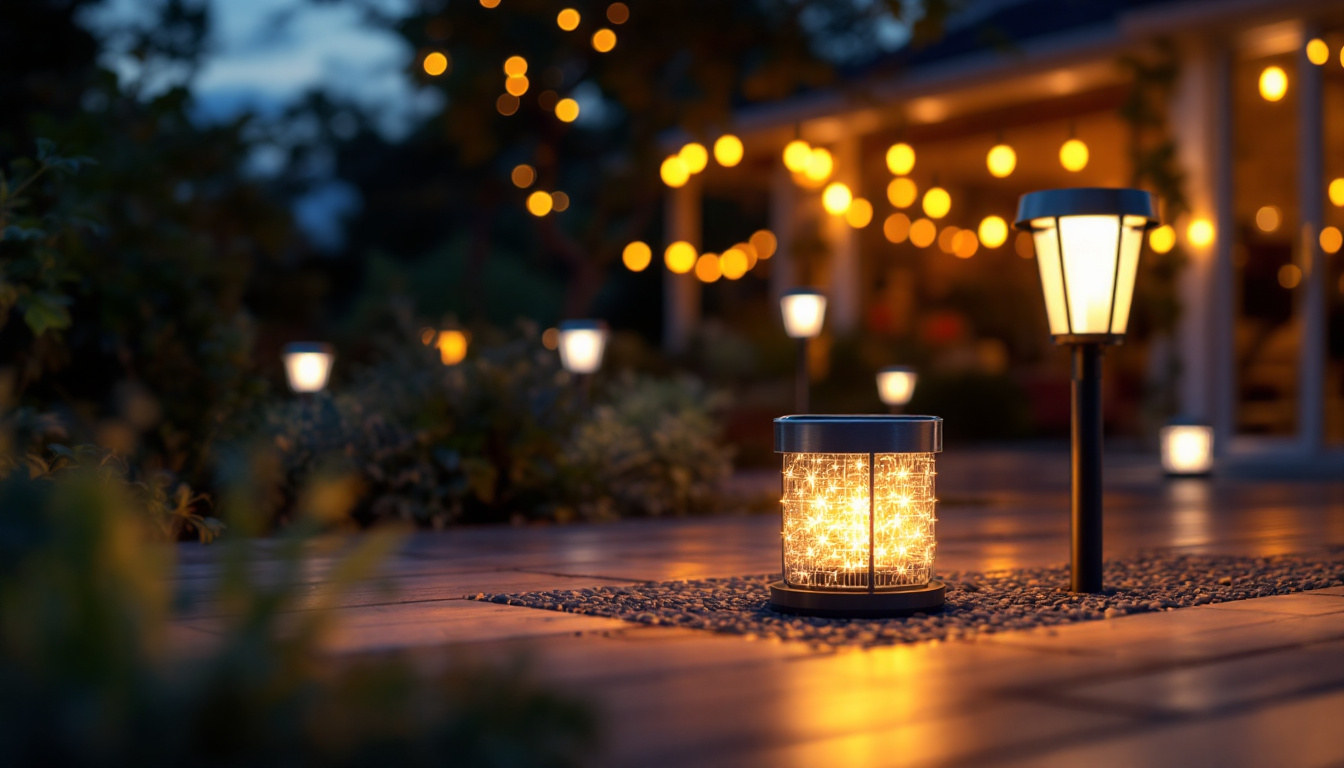

As the demand for stylish and functional lighting solutions continues to rise, pendant lighting has become a popular choice among homeowners and commercial property owners alike. For lighting contractors, understanding the nuances of pendant lighting installation is essential to delivering high-quality work that meets client expectations. This article outlines the do’s and don’ts of hanging pendant lighting, providing valuable insights that can help ensure successful installations.
Pendant lighting fixtures are versatile and can serve various purposes, from providing ambient light to accentuating specific areas in a room. They come in different styles, sizes, and materials, making them suitable for various settings, including kitchens, dining areas, and entryways. However, the effectiveness of pendant lighting largely depends on proper installation, which requires a keen understanding of both aesthetics and functionality.
Before diving into installation techniques, it is essential to familiarize oneself with the different types of pendant lights available. These can range from single pendants that provide focused light to multi-pendant arrangements that create a dramatic effect. Understanding the purpose of each type will help contractors make informed decisions during installation. For instance, a large drum pendant can serve as a statement piece in a spacious foyer, while smaller, clustered pendants can add a touch of whimsy above a kitchen island. Additionally, the choice of materials—such as glass, metal, or fabric—can significantly influence the ambiance of the space, allowing for a tailored approach to lighting design.
Pendant lights are commonly used in various applications, including kitchen islands, dining tables, and living room spaces. Each application may require different considerations, such as height, spacing, and the number of fixtures. Knowing where and how to use pendant lights effectively can enhance the overall design and functionality of a space. For example, when installing pendant lights over a dining table, it’s crucial to hang them at a height that allows for unobstructed views across the table while still providing adequate illumination. Furthermore, in open-concept layouts, pendant lights can help define different areas within a larger space, creating a sense of intimacy and warmth. The interplay of light and shadow cast by these fixtures can also add depth and texture, enriching the overall aesthetic of the environment.
Successful pendant lighting installation involves adhering to best practices that ensure both safety and aesthetic appeal. Here are some essential do’s to keep in mind.
One of the most critical aspects of hanging pendant lights is determining the appropriate height. A general rule of thumb is to hang pendants 30 to 36 inches above a dining table or kitchen island. This height allows for optimal illumination while ensuring that the light does not obstruct views or create an awkward atmosphere.
In spaces with higher ceilings, consider using longer cords or chains to adjust the height accordingly. It’s also important to consider the scale of the fixture; larger pendants may require a higher installation point to maintain balance within the room. Additionally, take into account the activities that will take place under the pendant light. For example, if the space is primarily used for dining or cooking, a slightly lower installation may enhance the intimate feel of the area, while higher placements can work well in areas meant for general illumination.
The style and size of the pendant light should complement the surrounding decor. When selecting fixtures, consider the overall design theme of the space. For instance, a modern pendant light may not suit a rustic kitchen, while a vintage fixture could clash in a contemporary setting.
Additionally, the size of the pendant should be proportionate to the space. A large pendant can serve as a focal point, while smaller fixtures may need to be grouped together to create visual interest. Always take the room’s dimensions into account when making selections. Consider the color palette of the room as well; a pendant light that incorporates colors found in the surrounding decor can create a harmonious look. Furthermore, think about the materials used in the pendant; metals, glass, and wood can all contribute to the overall aesthetic and should align with the textures present in the space.
The choice of bulbs can significantly impact the ambiance created by pendant lighting. LED bulbs are a popular choice due to their energy efficiency and longevity. However, the color temperature of the bulbs should also be considered. Warmer tones create a cozy atmosphere, while cooler tones can enhance a more modern feel.
Ensure that the wattage of the bulbs is compatible with the fixture to avoid any electrical issues. Using dimmable bulbs can also provide flexibility, allowing clients to adjust the lighting according to their needs. Additionally, consider the type of light fixture; some pendants may be designed to showcase decorative bulbs, which can add an extra layer of style. Vintage-style Edison bulbs, for example, can enhance a rustic or industrial look, while sleek, frosted bulbs may suit a minimalist design. Always remember that the right bulb can not only illuminate a space but also enhance the overall aesthetic appeal of the pendant light itself.
While there are many best practices to follow, there are also common pitfalls that contractors should avoid. Here are some essential don’ts to keep in mind during installation.
One of the most significant mistakes is overcrowding a space with too many pendant lights. While multiple fixtures can create a striking visual effect, too many can lead to a cluttered appearance and overpower the room’s design. It’s essential to strike a balance between illumination and aesthetics.
Consider the size of the room and the layout when determining how many pendants to install. In larger spaces, grouping fixtures can create a cohesive look, whereas smaller areas may only require a single pendant or a pair.
Safety should always be a top priority when installing pendant lighting. Ensure that all electrical work is up to code and that fixtures are securely mounted. It’s crucial to use appropriate wiring and connectors to prevent any electrical hazards.
Before beginning installation, turn off the power at the circuit breaker and double-check that the area is safe to work in. If there are any doubts about the electrical setup, it’s advisable to consult a licensed electrician.
Pendant lights, like any other fixture, require maintenance to ensure they continue to function and look their best. When installing, consider how easy it will be for clients to clean and replace bulbs. Fixtures that are difficult to access may lead to neglect over time, resulting in a less appealing appearance.
Discuss maintenance with clients and provide them with tips on how to care for their pendant lights. This can include recommendations for cleaning products and techniques to avoid damaging the fixtures.
Once the planning and selection process is complete, it’s time to focus on the installation techniques that will lead to a successful pendant lighting project.
Using the correct mounting method is crucial for the safety and longevity of the installation. Most pendant lights come with specific mounting hardware, which should be used to ensure a secure fit. Follow the manufacturer’s instructions closely, and make sure to use appropriate anchors and screws for the ceiling type.
For heavier fixtures, consider using a support brace or a ceiling junction box rated for the weight of the fixture. This additional support can prevent sagging and ensure that the pendant remains securely in place.
Wiring is a critical aspect of pendant lighting installation. Ensure that all connections are tight and secure to prevent any electrical issues. Use wire nuts to connect the fixture’s wires to the house wiring, and make sure to match the colors correctly: black to black, white to white, and green or bare to ground.
Double-check that the power is off before making any connections, and use a voltage tester to confirm that there is no live current. Once the wiring is complete, carefully tuck the wires into the junction box before securing the fixture to the ceiling.
Pendant lighting is not only functional but can also serve as a stunning design element in any space. Here are some tips for enhancing aesthetics through pendant lighting.
Incorporating pendant lighting as part of a layered lighting approach can significantly enhance the overall ambiance of a room. Combine pendant lights with other sources, such as recessed lighting, wall sconces, or floor lamps, to create a balanced and inviting atmosphere.
Consider the purpose of the space when layering light sources. For example, in a dining area, pendant lights can provide focused illumination, while ambient lighting can create a warm and welcoming environment for guests.
Pendant lights can be strategically placed to highlight architectural features within a space. For instance, hanging fixtures above a kitchen island can draw attention to the countertop design, while lights over a dining table can accentuate unique furniture pieces.
When planning the layout, consider how the pendant lights will interact with other elements in the room. This thoughtful approach can elevate the overall design and create a cohesive look.
Hanging pendant lighting is a rewarding endeavor for lighting contractors, offering the opportunity to enhance spaces with both functionality and style. By adhering to the do’s and don’ts outlined in this article, contractors can ensure successful installations that meet client expectations and elevate the overall design of a space.
From understanding the various types of pendant lights to employing best practices in installation, the key to success lies in careful planning and execution. By prioritizing safety, aesthetics, and functionality, contractors can create stunning lighting solutions that leave a lasting impression.
Ready to take your lighting installations to the next level? At LumenWholesale, we provide lighting contractors with the finest selection of spec-grade pendant lighting options to fulfill any design vision. Our commitment to quality and affordability ensures that you can access the best lighting products at wholesale prices, making your projects shine without breaking the bank. Say goodbye to middleman markups and hello to convenience with our hassle-free bulk buying and free shipping. Elevate your lighting game and give your clients the exceptional results they deserve. Discover the ideal fusion of performance, price, and convenience at Wholesale Lighting at the Best Value.

Discover innovative strategies from expert lighting contractors on harnessing solar power for outdoor illumination.

Discover why the 120V60W light bulb is a must-have for lighting contractors.

Discover how outdoor security lamps are revolutionizing the lighting industry and becoming essential tools for contractors.

Discover how sourcing lighting products wholesale can give lighting contractors a competitive edge in bidding.
Get notified when NEW deals are released.
Optimize your budget with wholesale discounts.
Only top-quality, specification-grade lighting products.
No additional costs at checkout - what you see is what you pay.
We understand the unique needs of contractors.